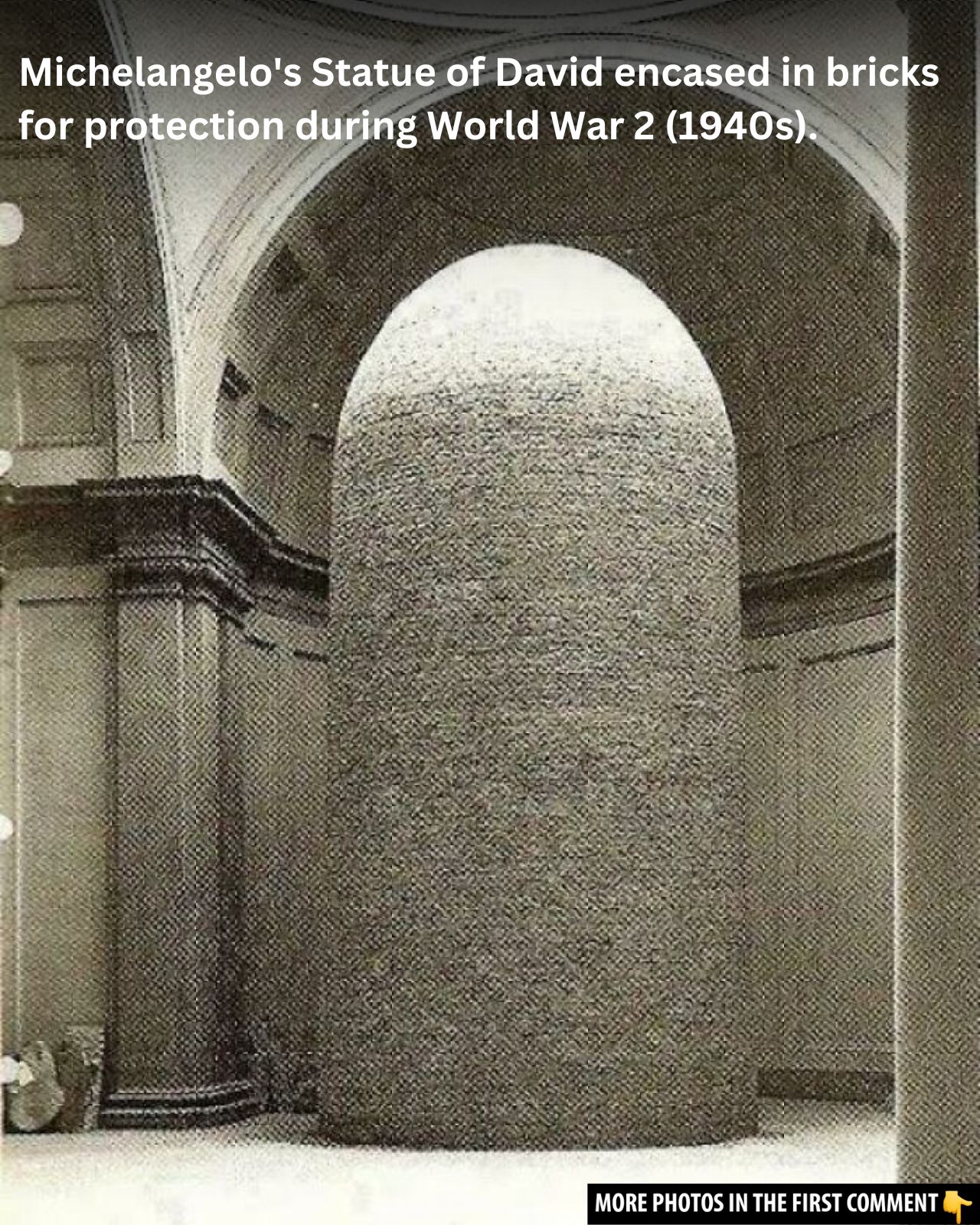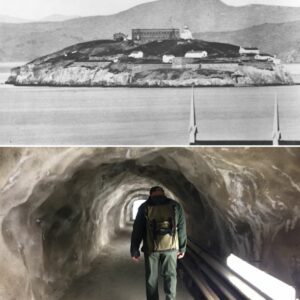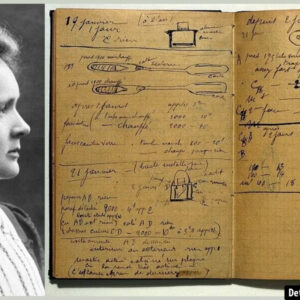World War II is often remembered through the stark contrast of black-and-white images, each frame capturing the devastation, courage, and resilience that defined the era. However, a rare collection of color photographs from the conflict offers a unique glimpse into history, bringing to life moments from the battlefield and behind the scenes with striking vibrancy. These photographs, many of which have never been seen before, shed light on the personal stories and emotional landscapes of the people who lived through this global catastrophe. From soldiers in action to civilians celebrating liberation, these rare color images transport us back in time, making the past feel closer than ever.
Rarely Seen Moments: Behind the Scenes of WWII
The Second World War is most often remembered for its battles, destruction, and loss, but these color images shift the focus to humanize the war. From soldiers working tirelessly in North Africa to nurses tending to the wounded in England, these photographs bring to life the often unseen aspects of wartime experiences.
Among the most poignant of these are shots of individuals in the midst of their everyday struggles. For instance, one iconic image shows a member of the Auxiliary Territorial Service (ATS) ‘spotting’ from a 3.7-inch anti-aircraft gun site in 1942. This image, filled with vivid color, not only provides a historical record but also tells a story of individual perseverance in the face of overwhelming adversity.
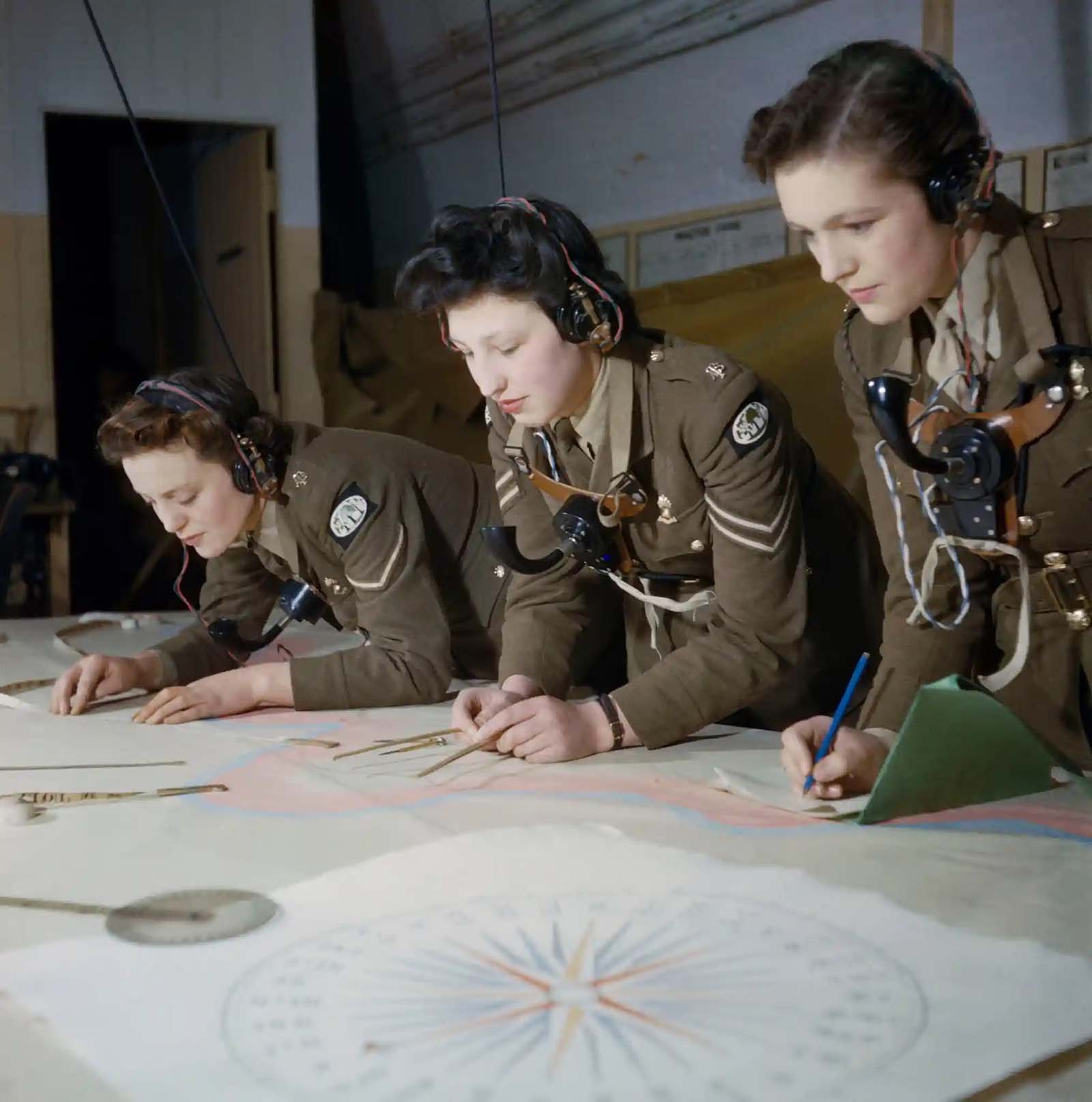
Powerful WWII Colorized Photos
In 1943, a crew from the 16th/5th Lancers, 6th Armoured Division, was photographed cleaning the barrel of their Crusader tank in El Aroussa, Tunisia. The colorized photo shows the soldiers in vibrant detail as they tend to their equipment in the scorching North African heat. This image, along with others from the frontlines, highlights the immense human effort and technical skill that were key to military success during the war.
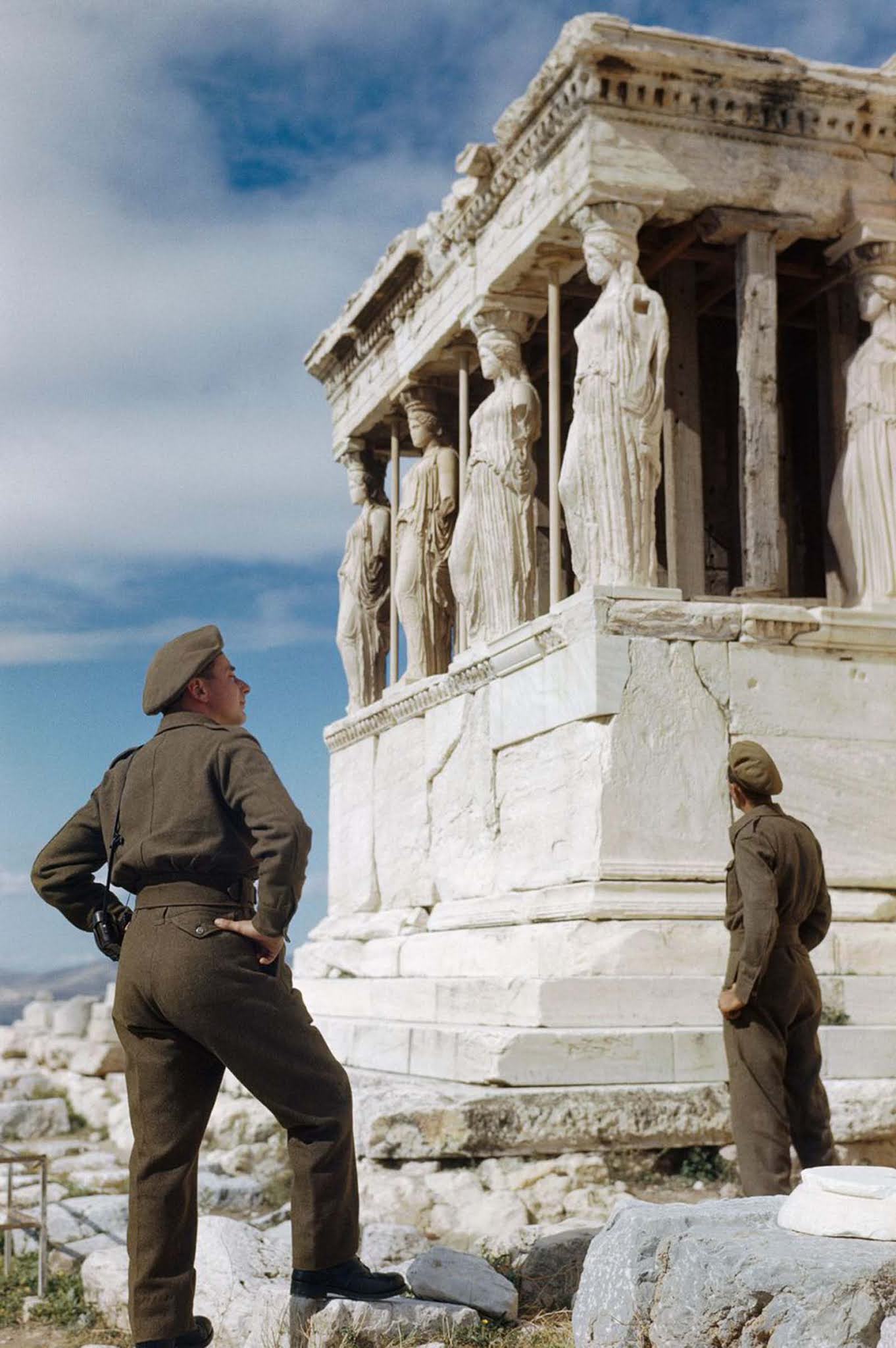
Another rare image captures British soldiers in Greece admiring the stunning Caryatids on the Acropolis in 1944, offering a fleeting moment of peace amid the chaos. Such moments remind us that, even in the darkest hours, there were brief interludes of calm, reflection, and human connection.
Video
Watch Hitler in Colour and see rare color footage that offers a new perspective on this infamous historical figure.
The Devastating Toll of WWII
World War II’s death toll is staggering. An estimated 70 to 85 million people perished during the war, with around 50 million of them civilians. The Soviet Union alone lost approximately 27 million people, a devastating percentage of its population. These numbers are mind-boggling, but these rare color photos show the human faces behind the statistics. One particularly striking photograph from 1945 depicts two prisoners of the Buchenwald concentration camp holding human bones, starkly conveying the horrors of the Holocaust.
The war didn’t just affect military personnel; it touched every aspect of civilian life. Children, families, and entire communities were torn apart by bombings, deportations, and mass killings. In Germany, for instance, Allied bombings destroyed over 160 cities, resulting in the deaths of over 600,000 civilians. The bombing raids on cities like Rotterdam, London, and Tokyo, along with the horrific destruction of Dresden, are all captured in these rare color images, helping us understand the full scale of the war’s devastation.
The Holocaust: The Systematic Genocide of Jews and Minorities
One of the darkest chapters in World War II was the Holocaust, in which approximately six million Jews were systematically murdered by Nazi forces. Other targeted groups, including Roma, Slavs, and disabled individuals, suffered similar fates. These atrocities, now immortalized in rare color photographs, shed light on the unimaginable suffering endured by these populations. A chilling image from 1945 shows prisoners from Buchenwald, a concentration camp, illustrating the barbaric treatment of millions of innocent lives.

The images of concentration camps, the struggles of Jewish refugees, and the resilience of those who survived are crucial in remembering the horrors of the Holocaust. These color photographs are not only historical documents but are essential in ensuring that such atrocities are never forgotten.
The Impact of Aerial Bombing Campaigns
The mass bombings carried out by both the Allies and the Axis powers had devastating effects on civilian populations. Cities like Warsaw, London, Rotterdam, and Tokyo were targeted, resulting in untold death and destruction. These bombings were not just strategic military operations; they were acts of terror that affected everyday citizens. The destruction of these cities, captured in rare color photographs, provides a grim reminder of the cost of war.
In the Western front, the bombing of German cities, including Hamburg and Dresden, by the Allies caused the deaths of tens of thousands of civilians. These aerial assaults are often seen as war crimes, as entire neighborhoods were obliterated, leaving countless civilians in their wake.
The Cost of War: Allies and Axis Forces

While the Allies, led by the United States, the United Kingdom, and the Soviet Union, ultimately defeated the Axis powers, the cost was staggering. The Axis forces, led by Germany, Japan, and Italy, lost millions of soldiers and civilians as well. The Russian front, in particular, was one of the most brutal theaters of war, with massive losses on both sides. The Soviet Union alone lost millions, with some estimates putting the death toll as high as 27 million, a significant portion of which were civilians.
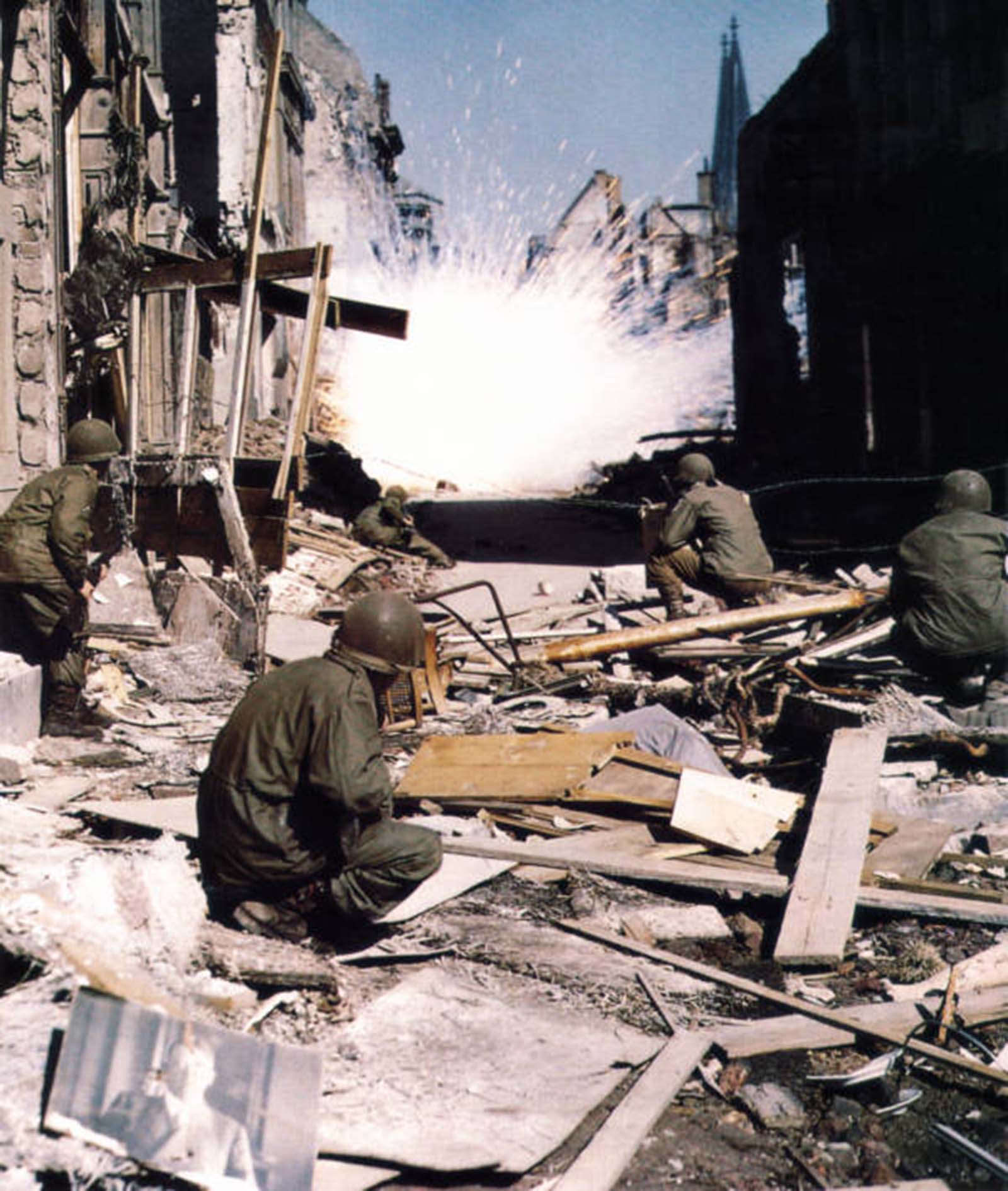
These rare color photographs illustrate the scale of loss and the human cost of war, giving us a glimpse into the daily lives of soldiers and civilians caught in the crossfire. Images of soldiers, medics, and factory workers, often showing them at rest or in reflective moments, provide a powerful contrast to the brutality of the war.
The Emotional Power of WWII Photographs
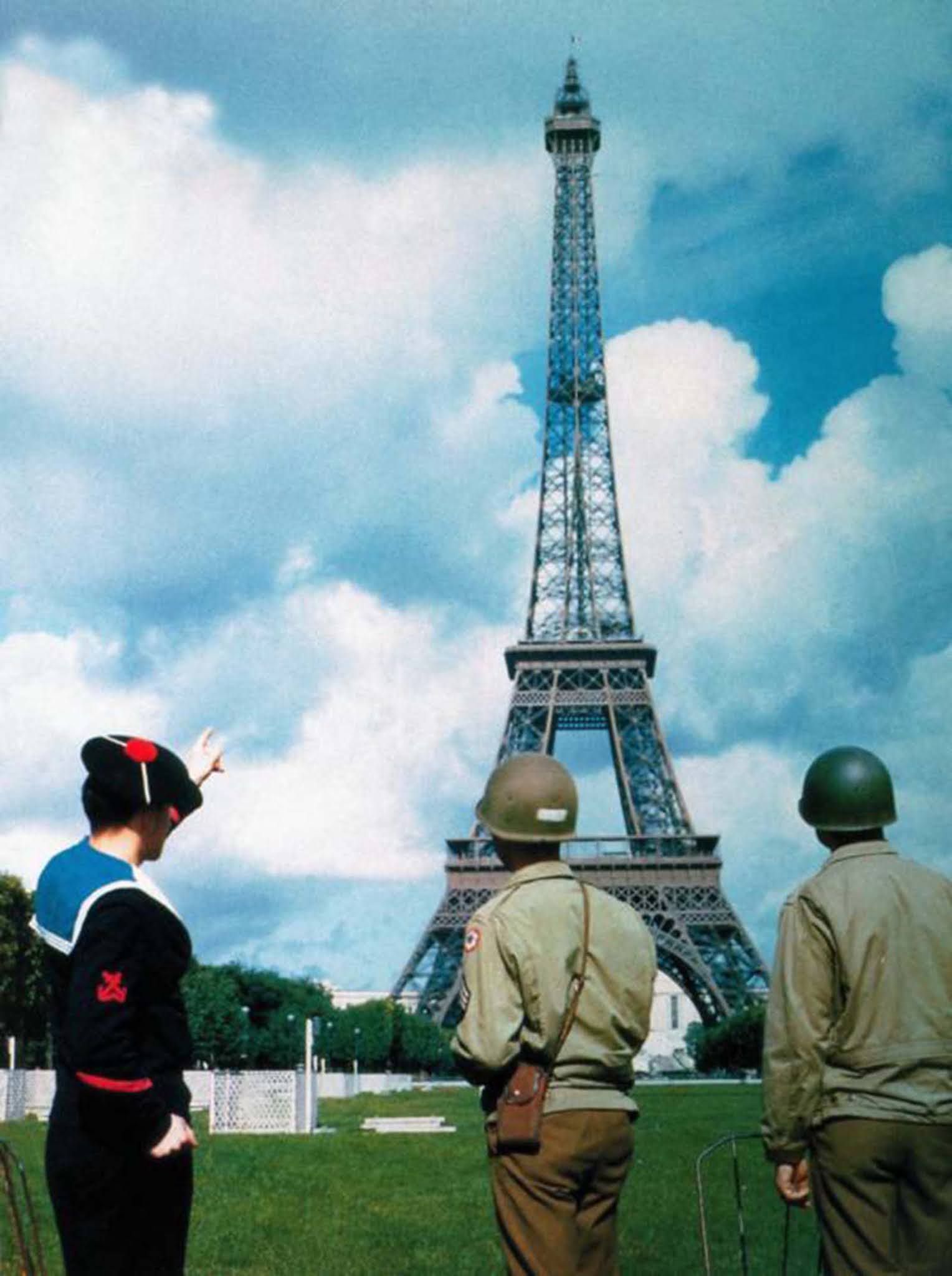
One of the most remarkable things about these rare color photographs is their ability to evoke emotion. For example, an image of a French sailor and two U.S. soldiers gazing at the Eiffel Tower after the liberation of Paris in 1944 captures a moment of triumph and relief after years of Nazi occupation. Another heartwarming photo shows Dutch civilians celebrating the liberation of Eindhoven, dancing joyfully in the streets as the Allied forces roll through.
These images not only document history but also highlight the resilience of people during wartime. Despite the horrors they faced, soldiers and civilians alike found ways to celebrate life, even in the smallest moments.
Gallery of Photos
In addition to the historical significance of these images, the colors themselves offer an unparalleled view of World War II. From the daily lives of soldiers to the devastation of bombed cities, these photographs tell a story that is both personal and global in scale. The gallery includes some of the most striking images from the war, including:
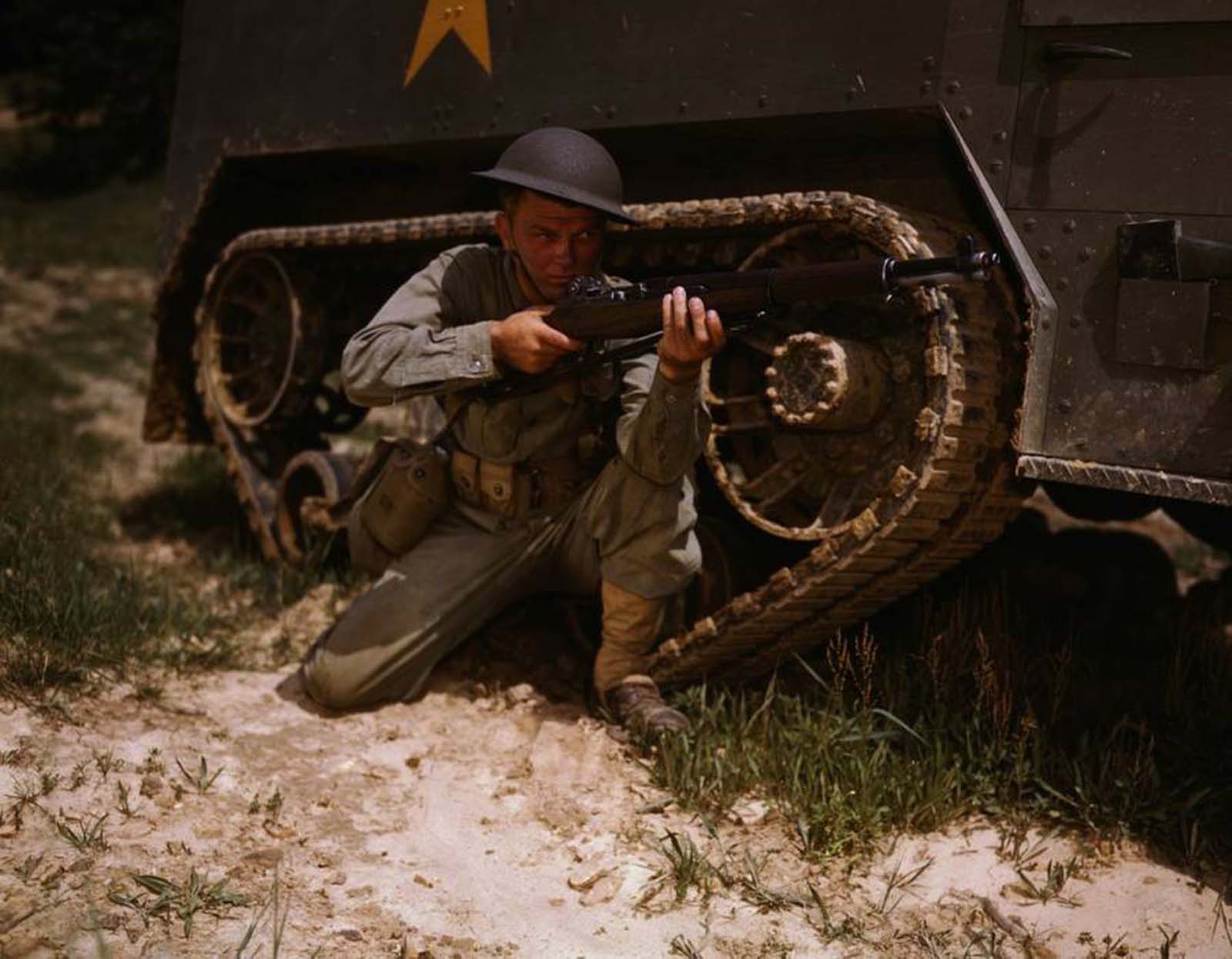
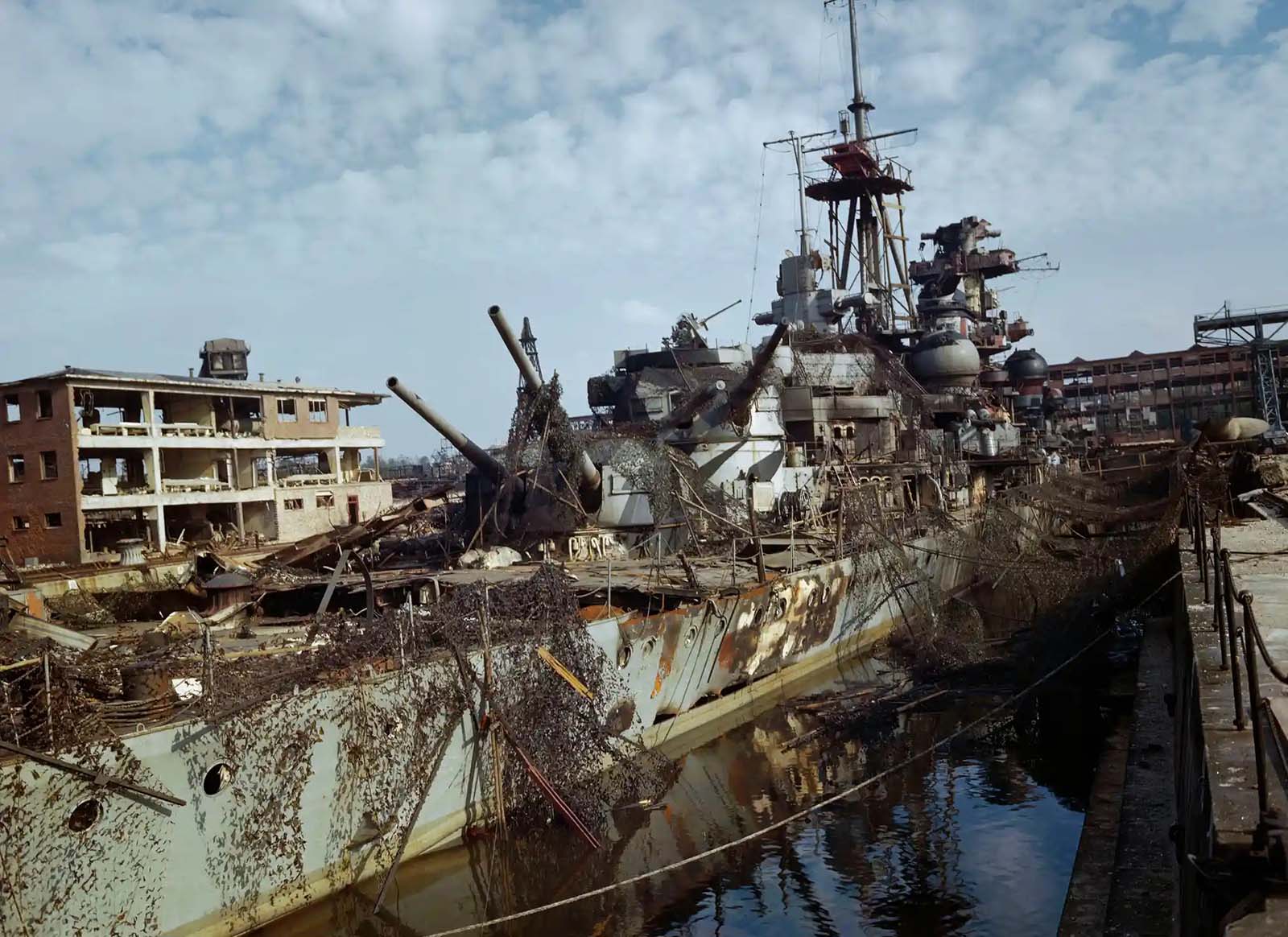
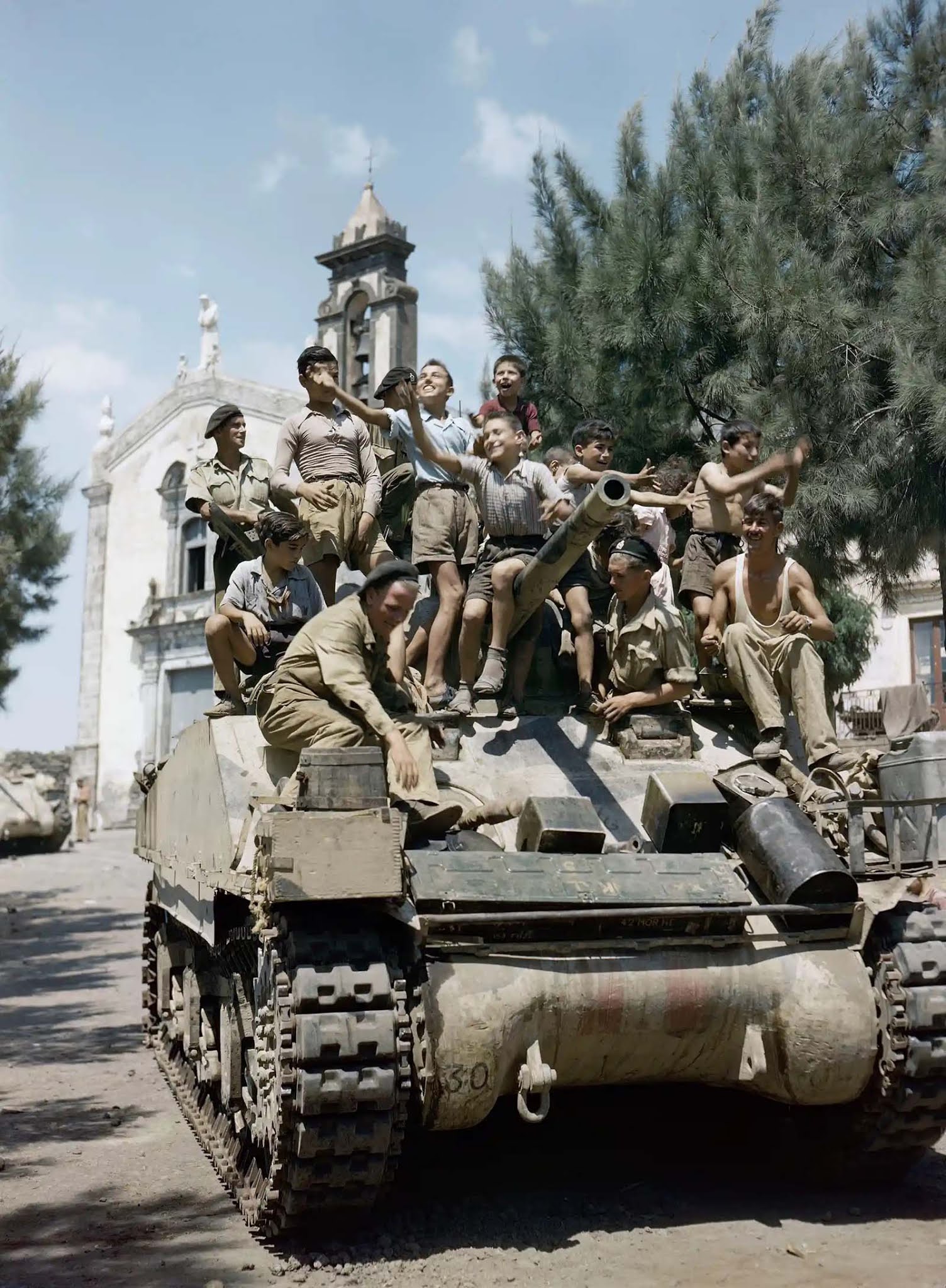
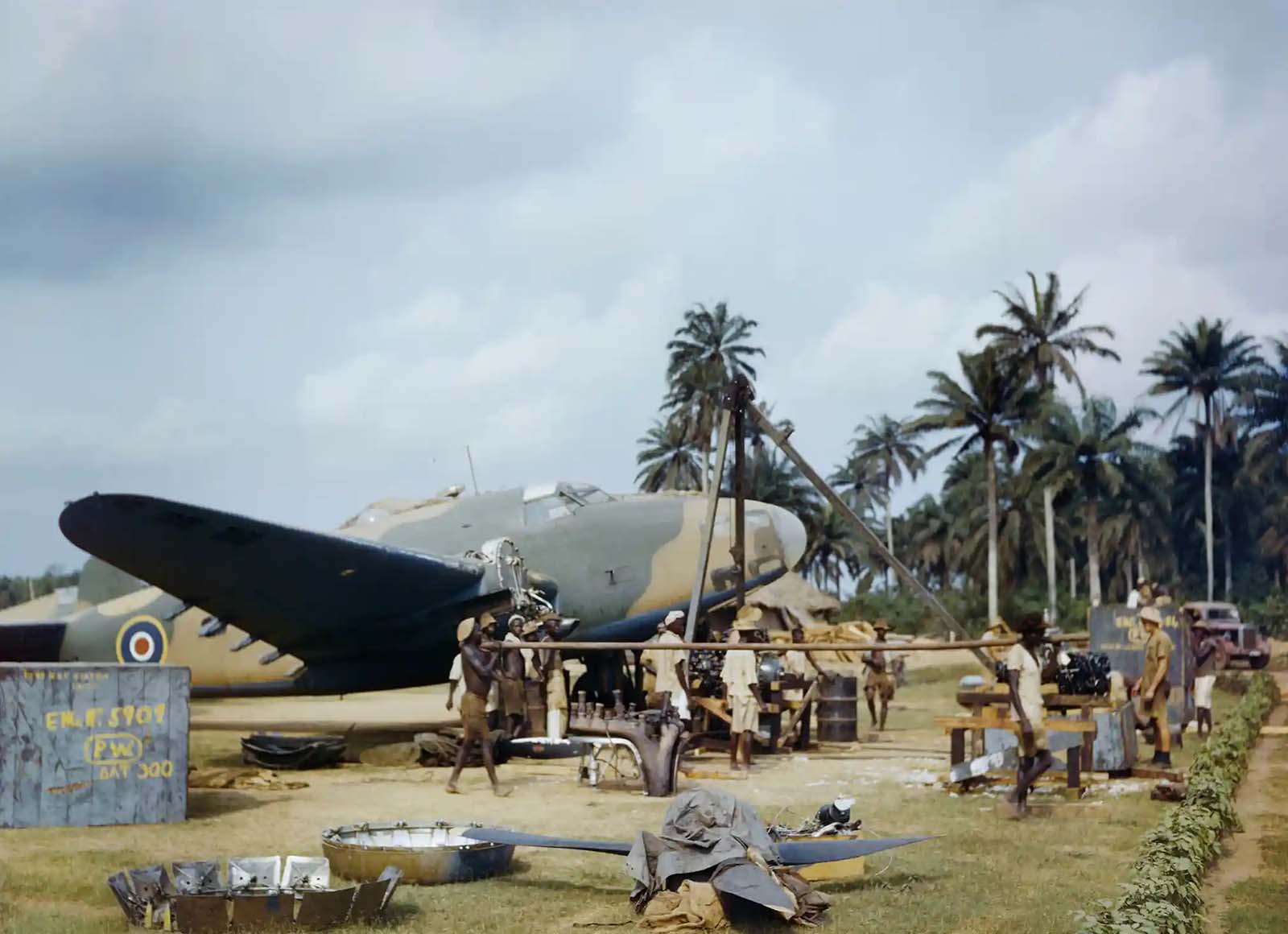


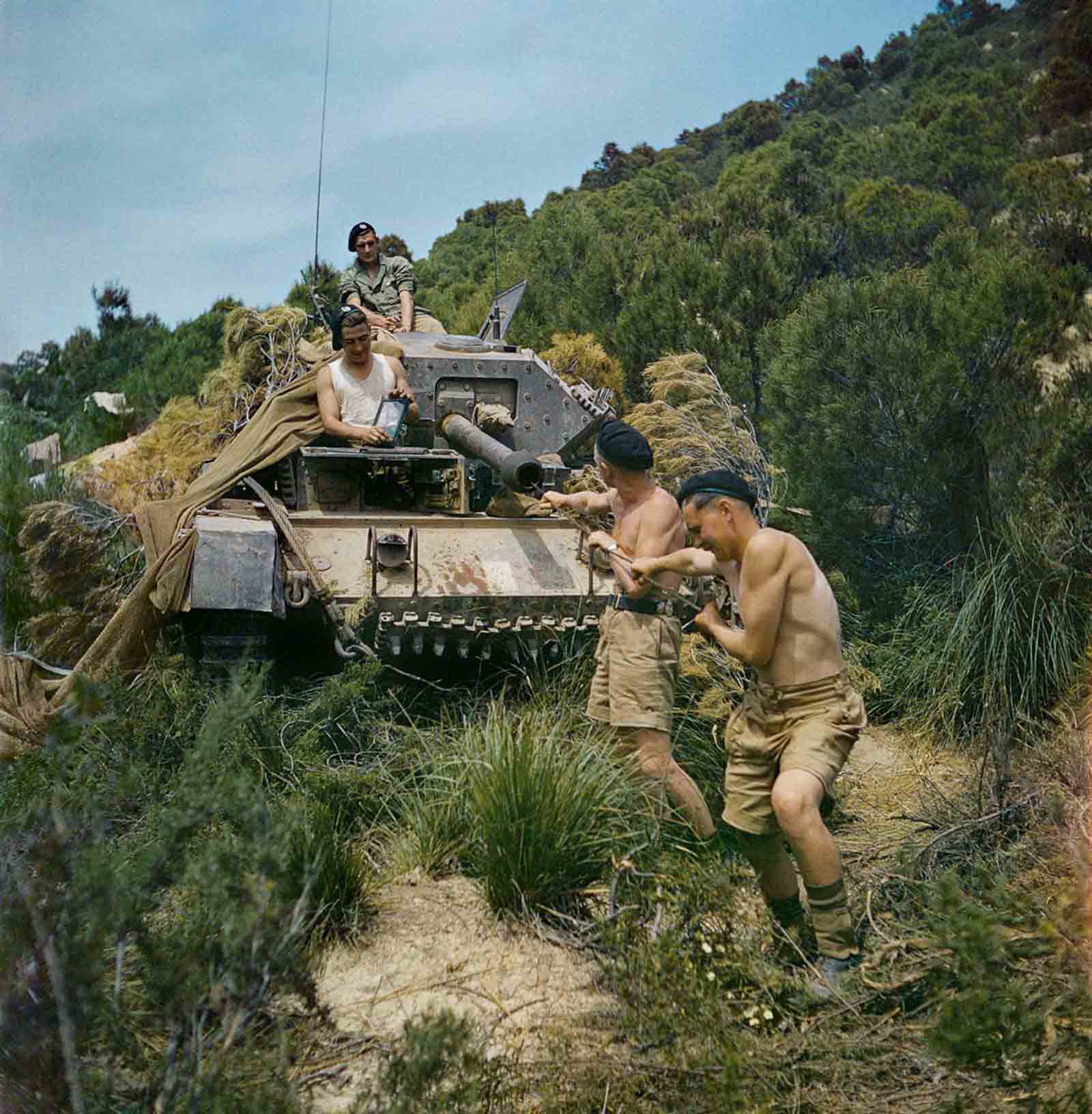
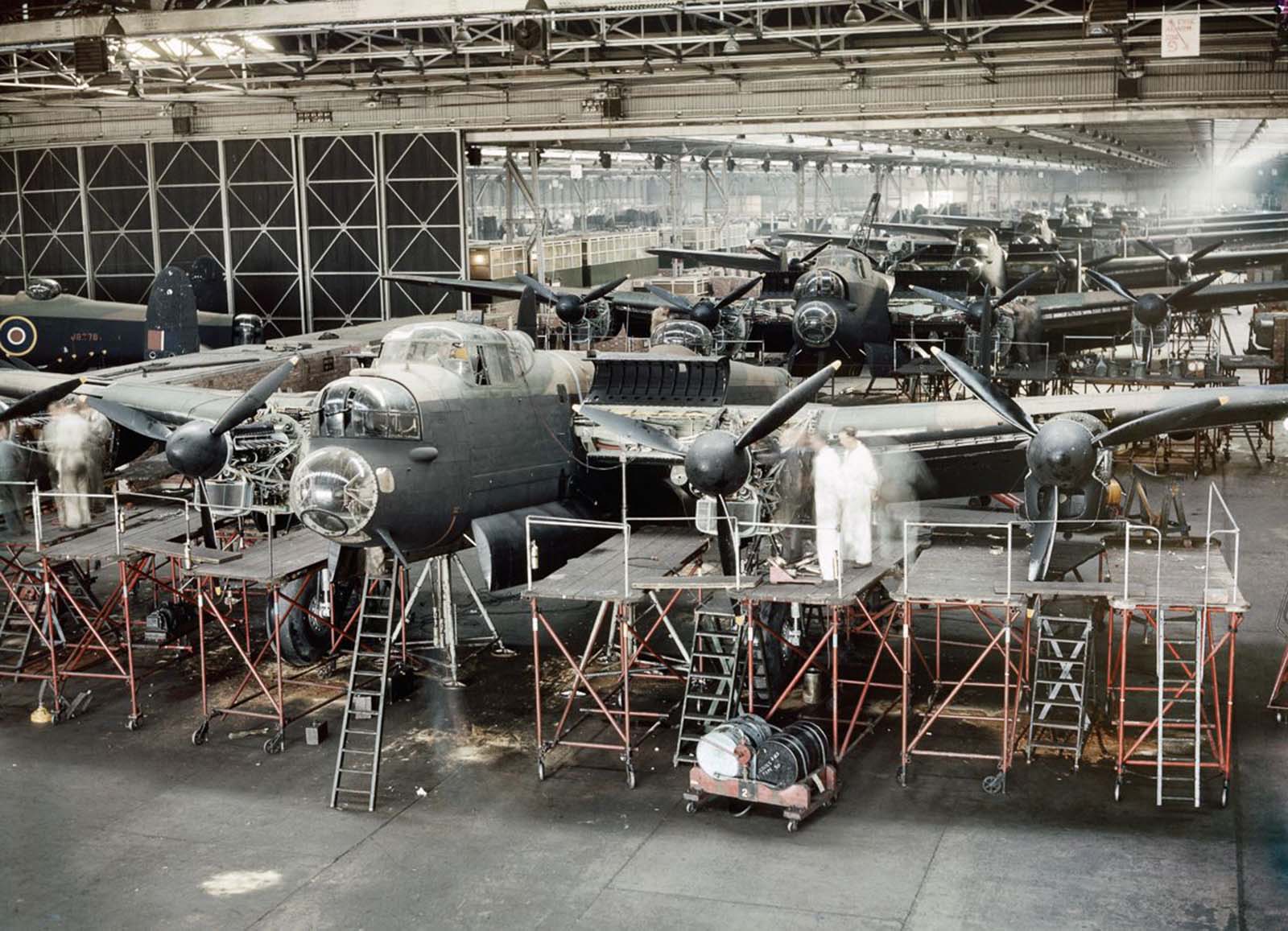
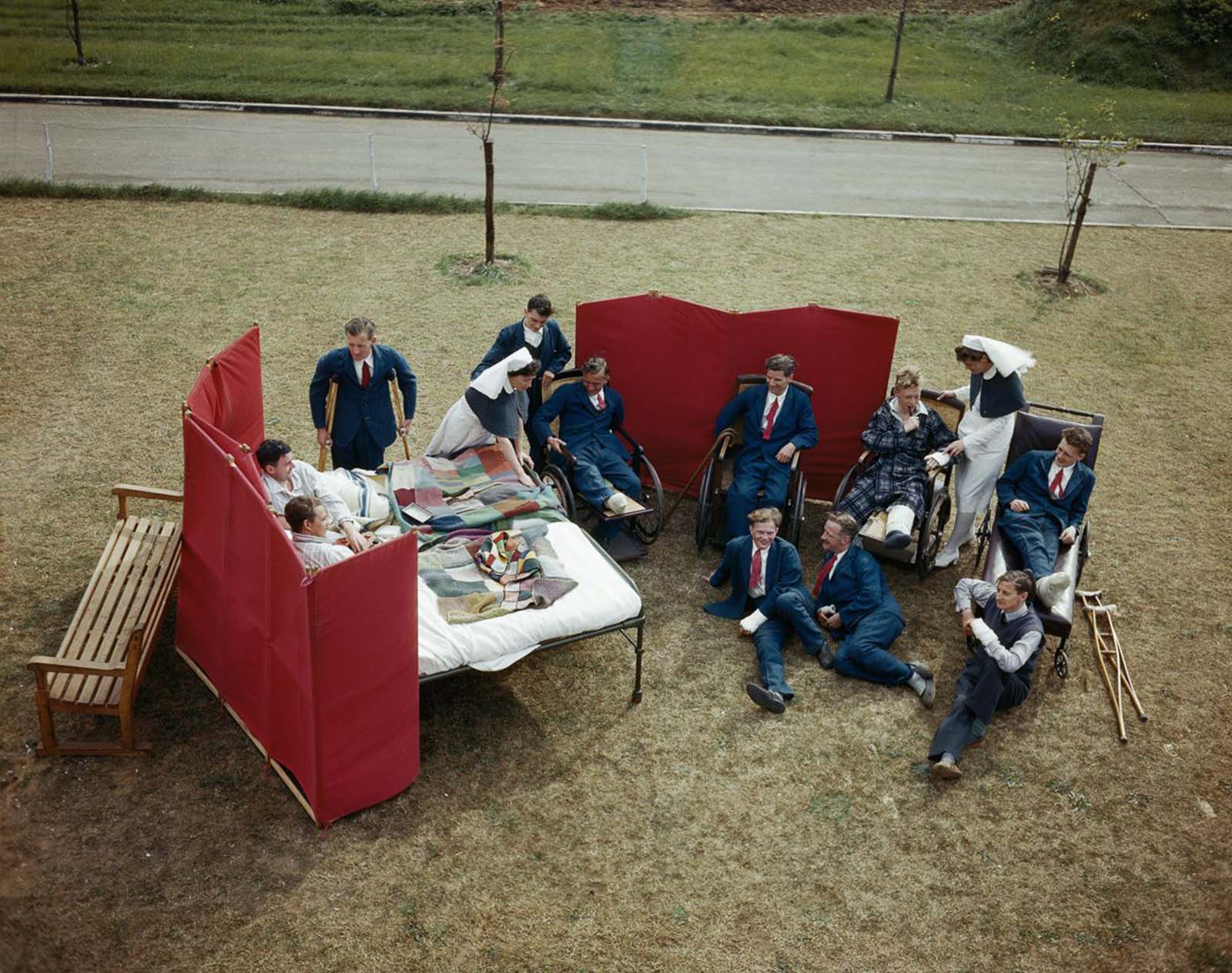

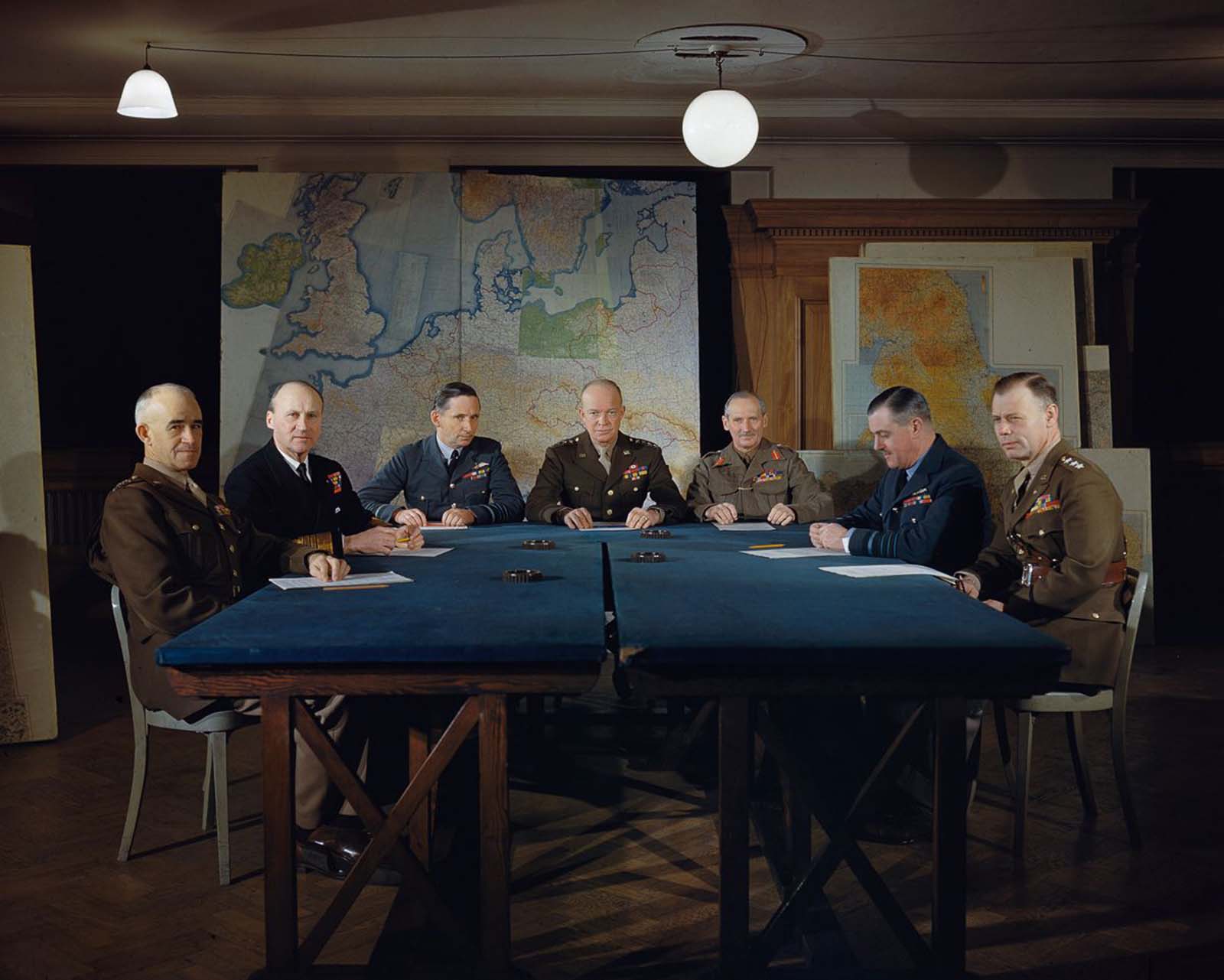
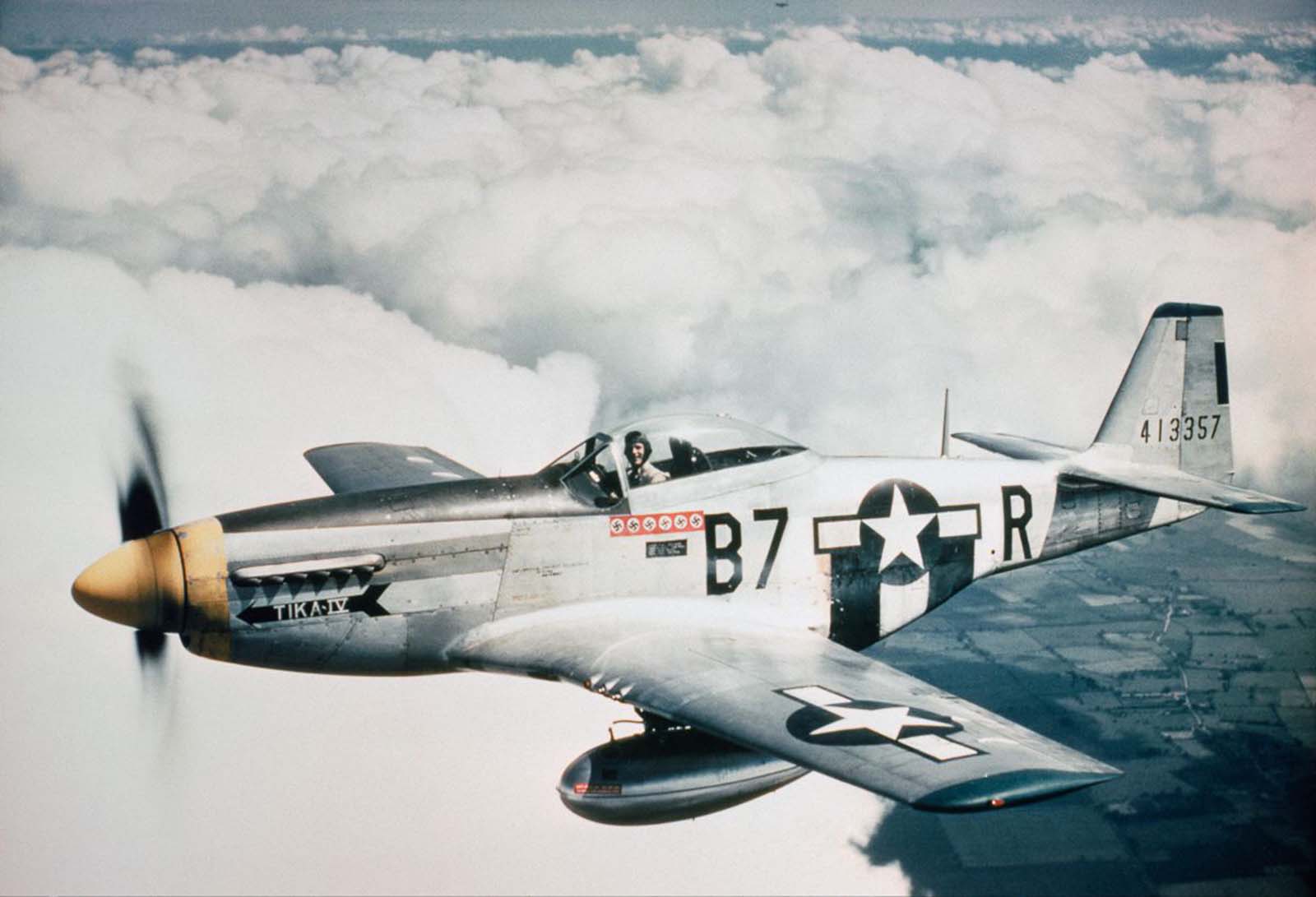
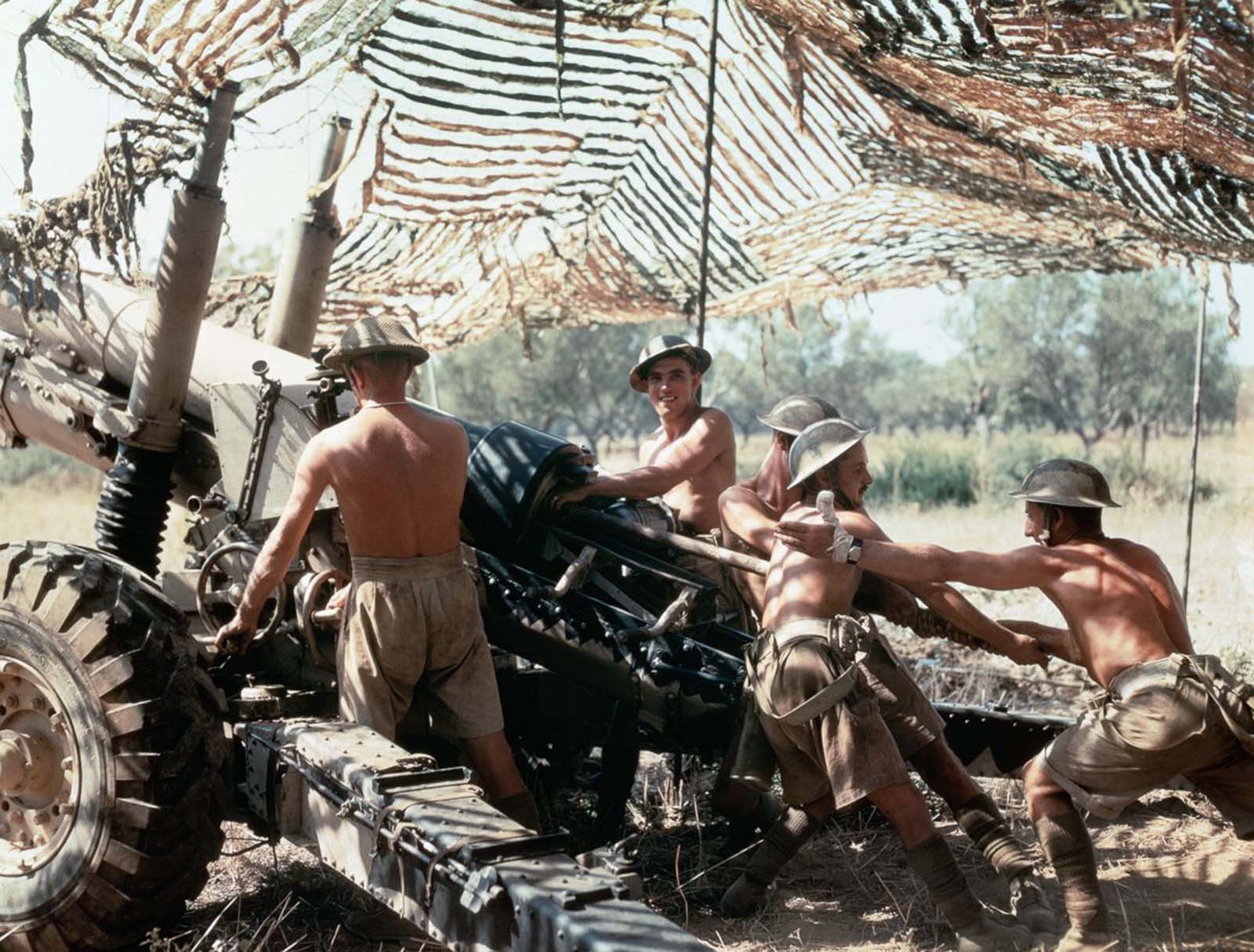
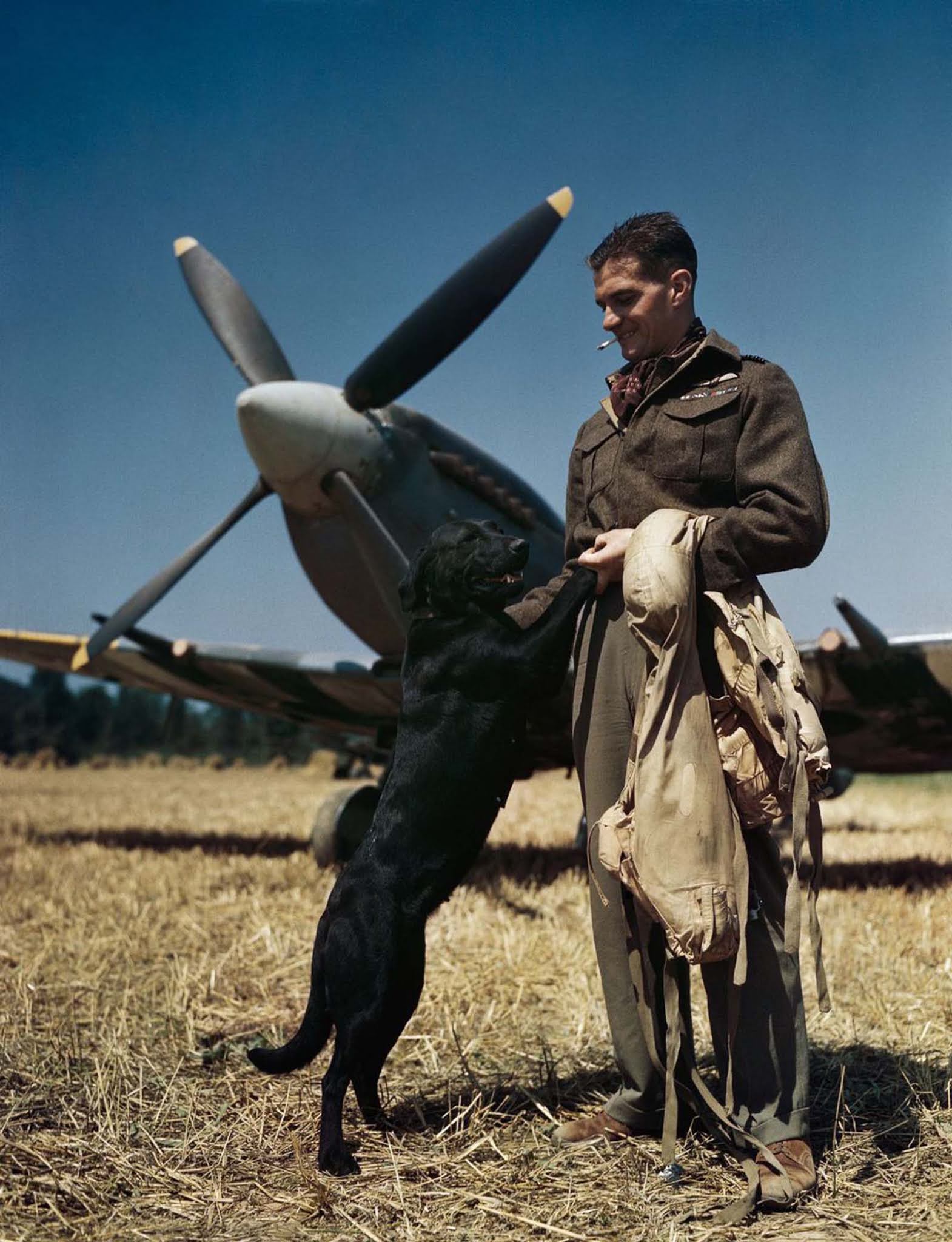

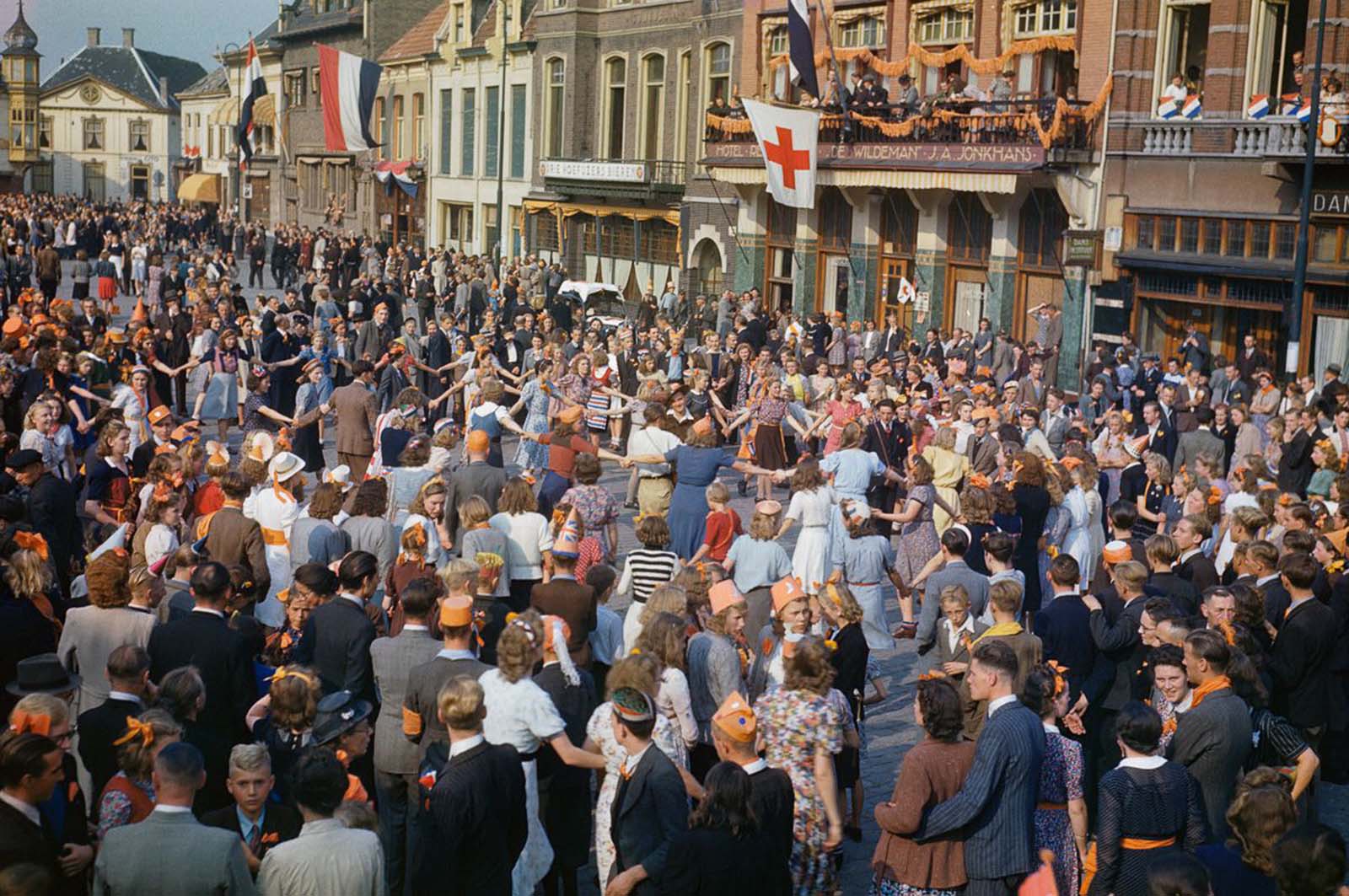
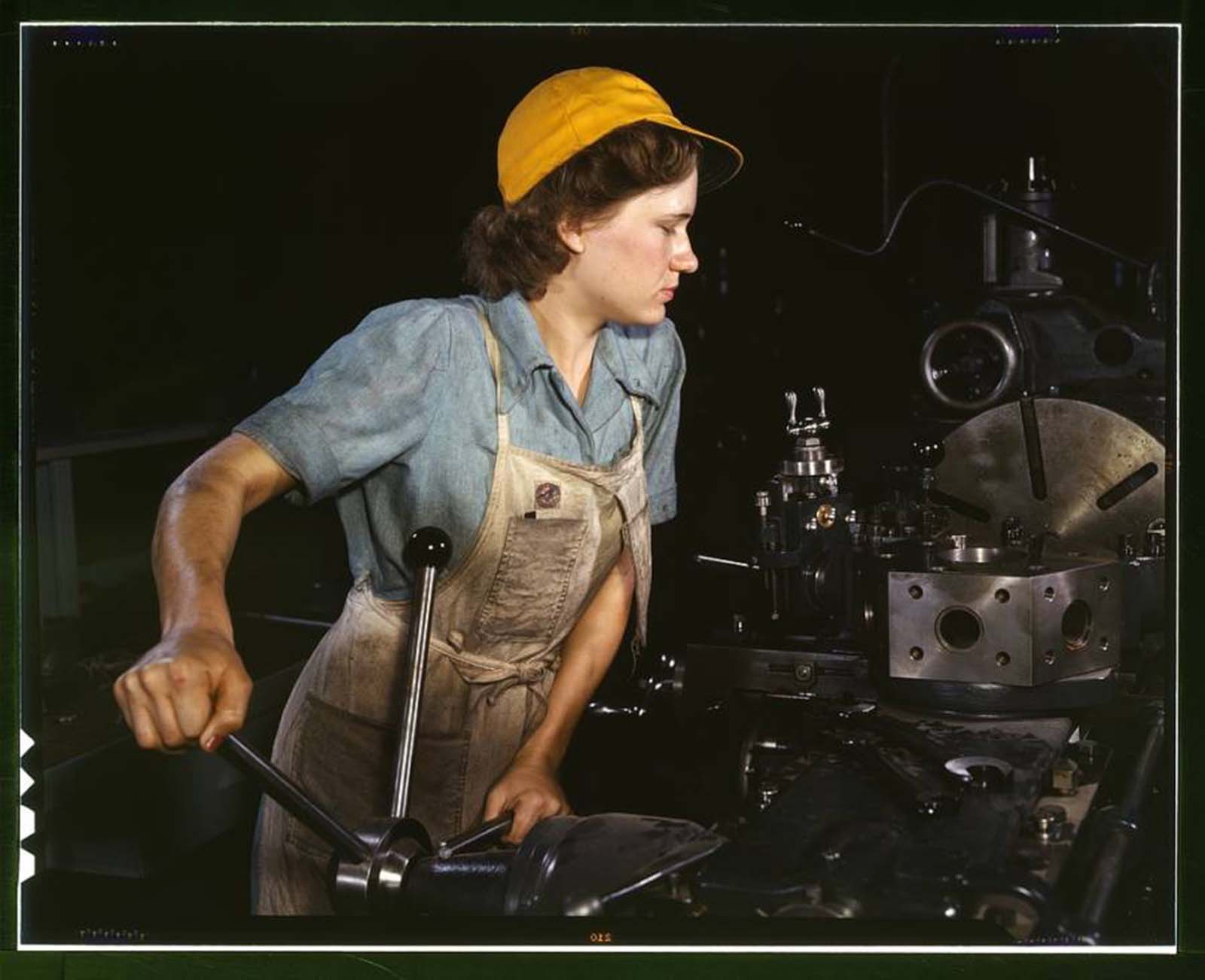
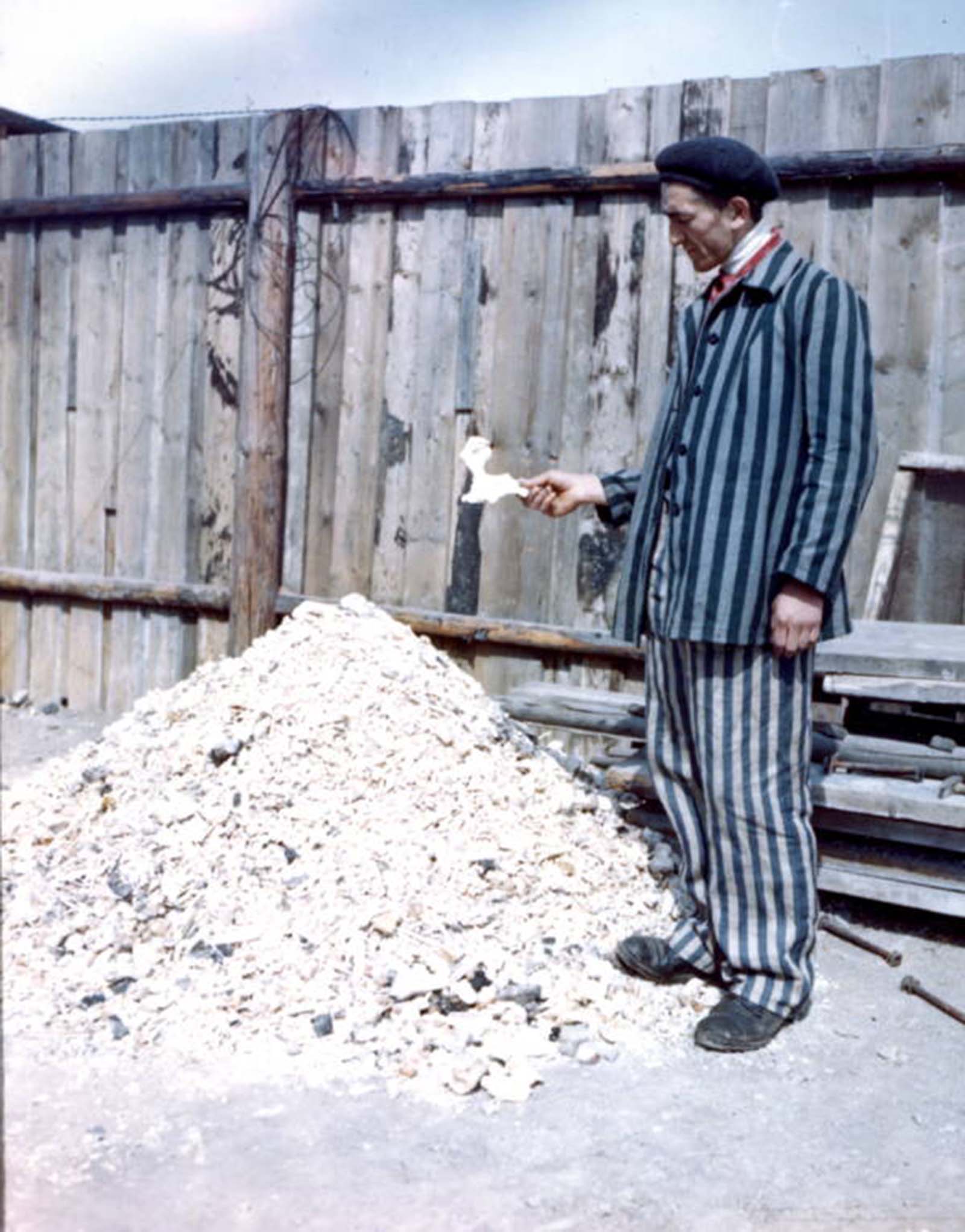
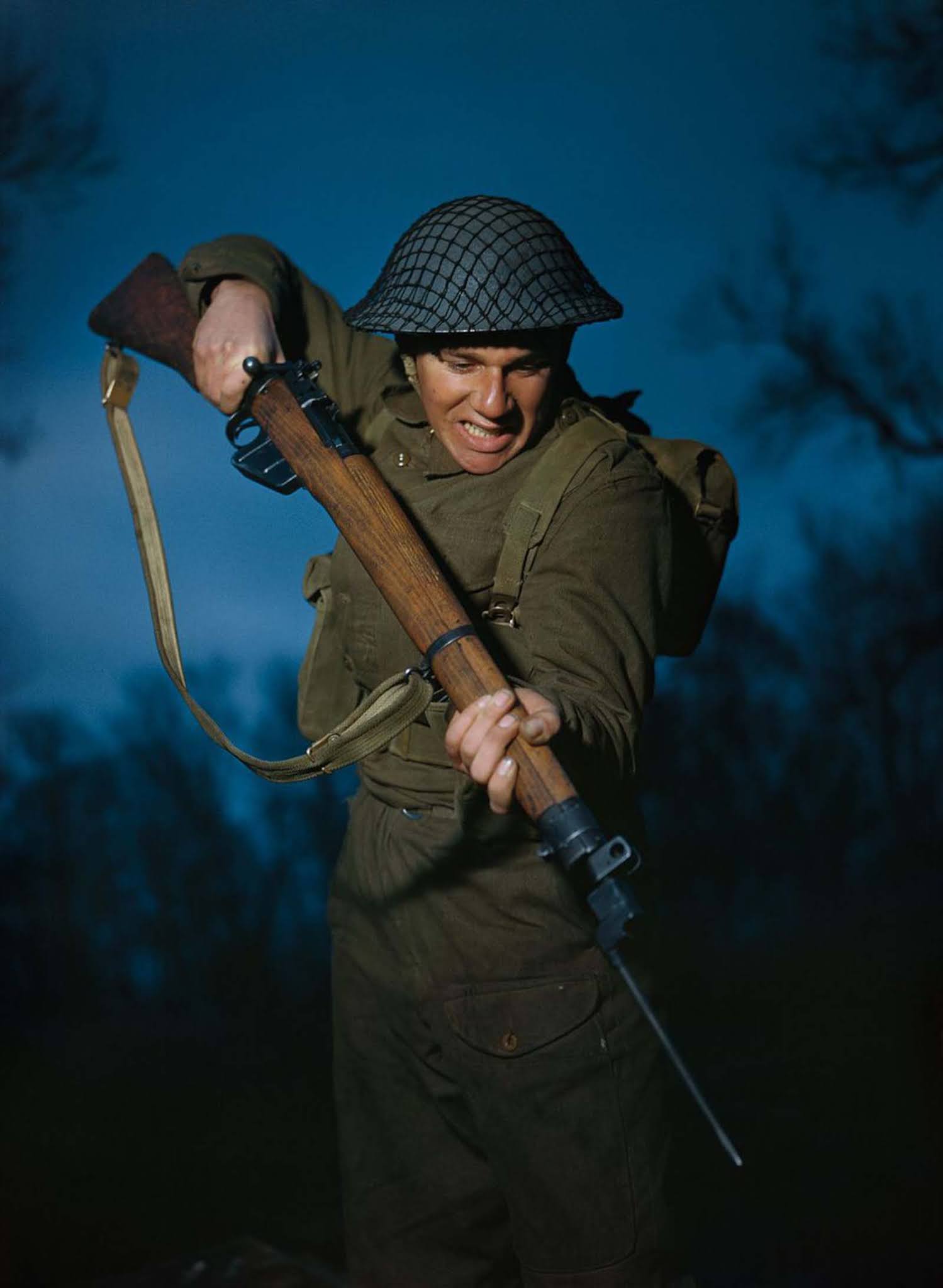

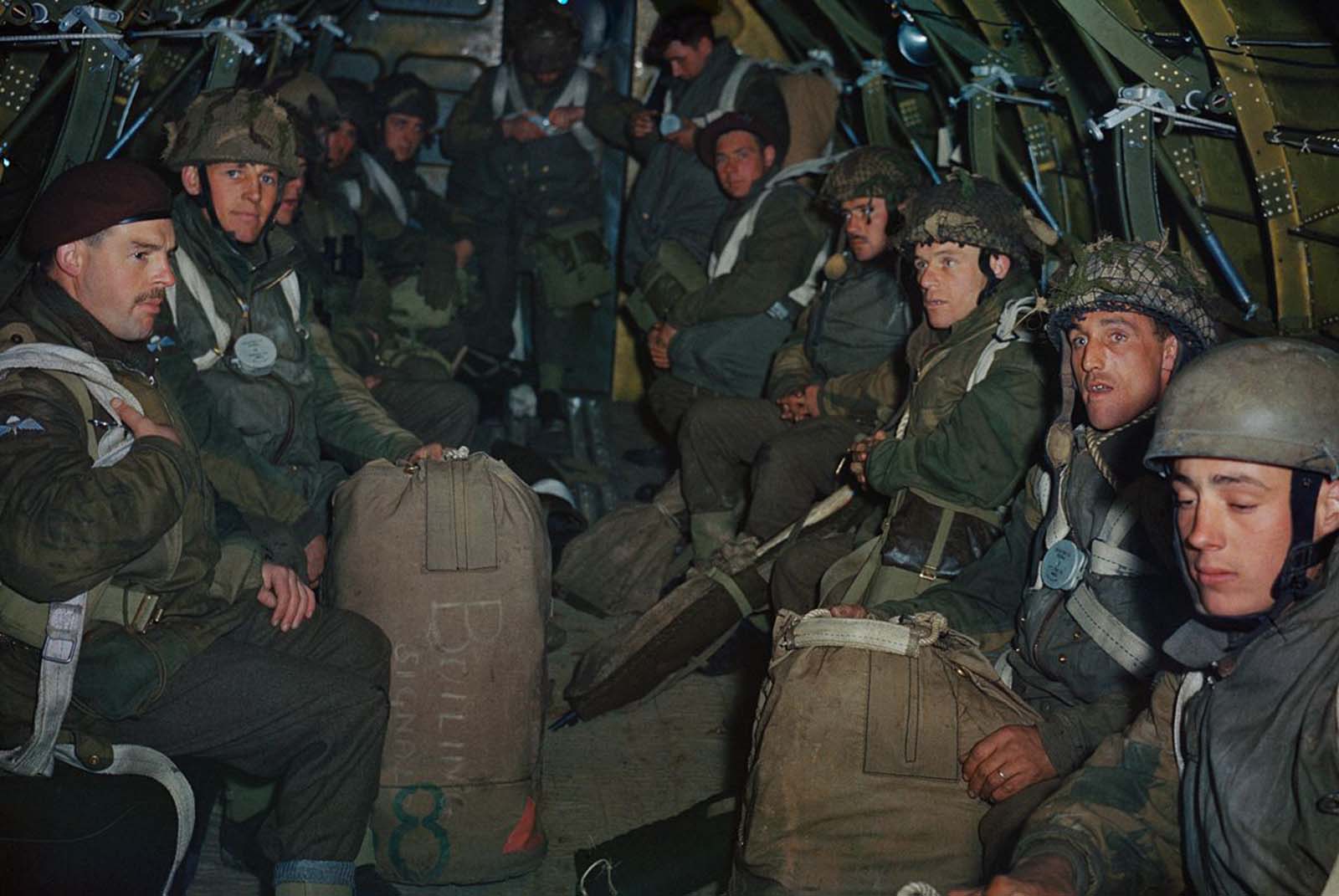
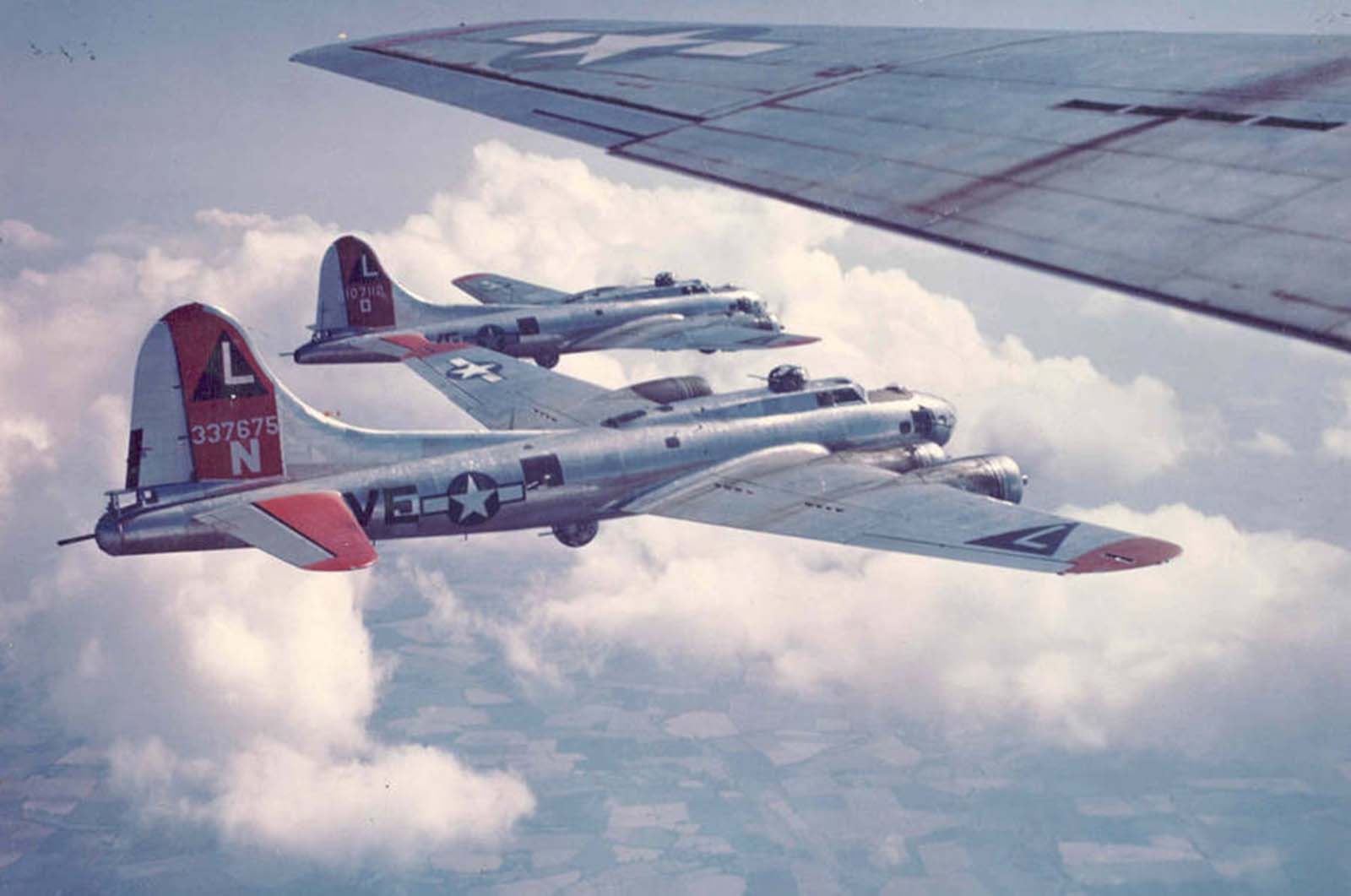
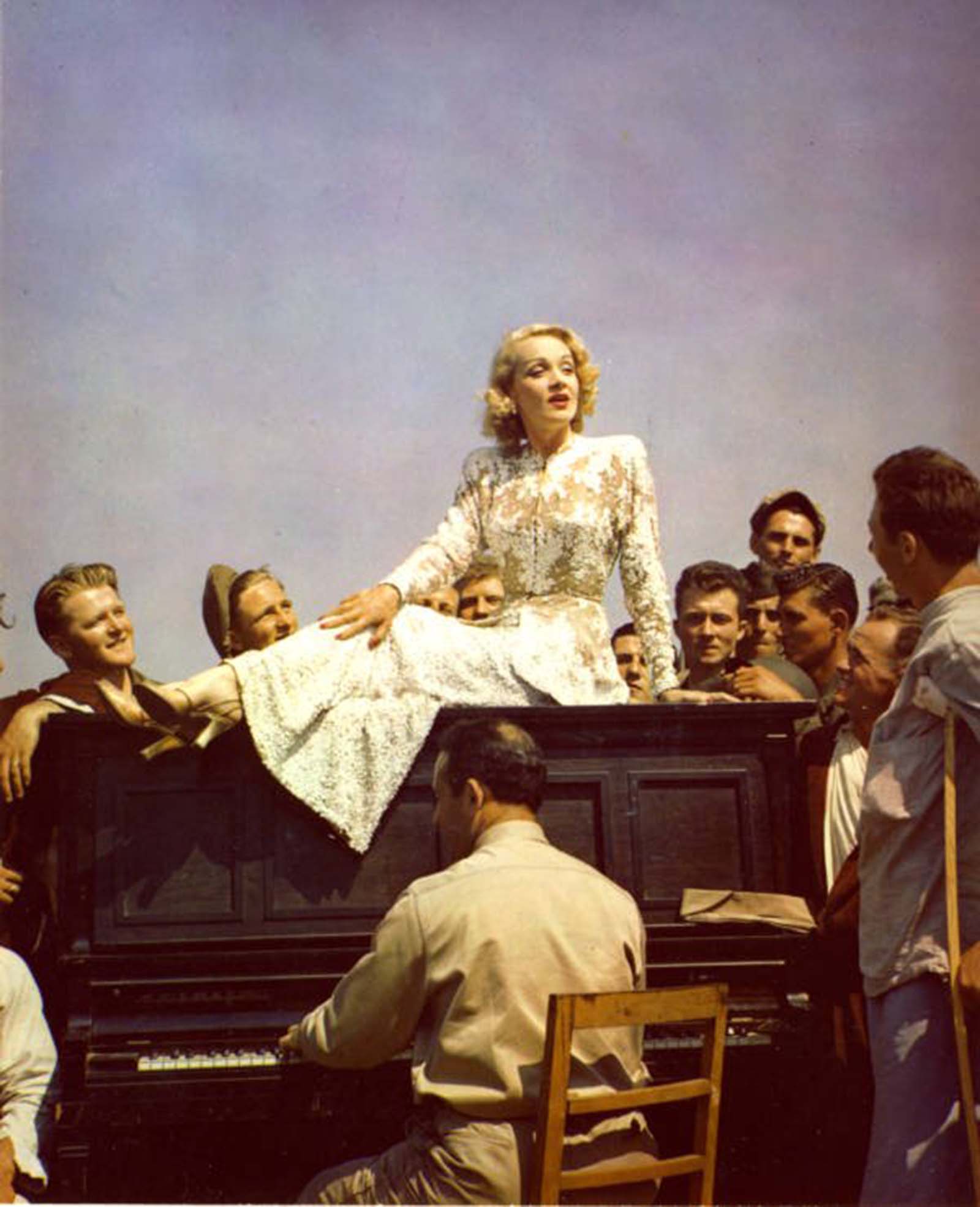
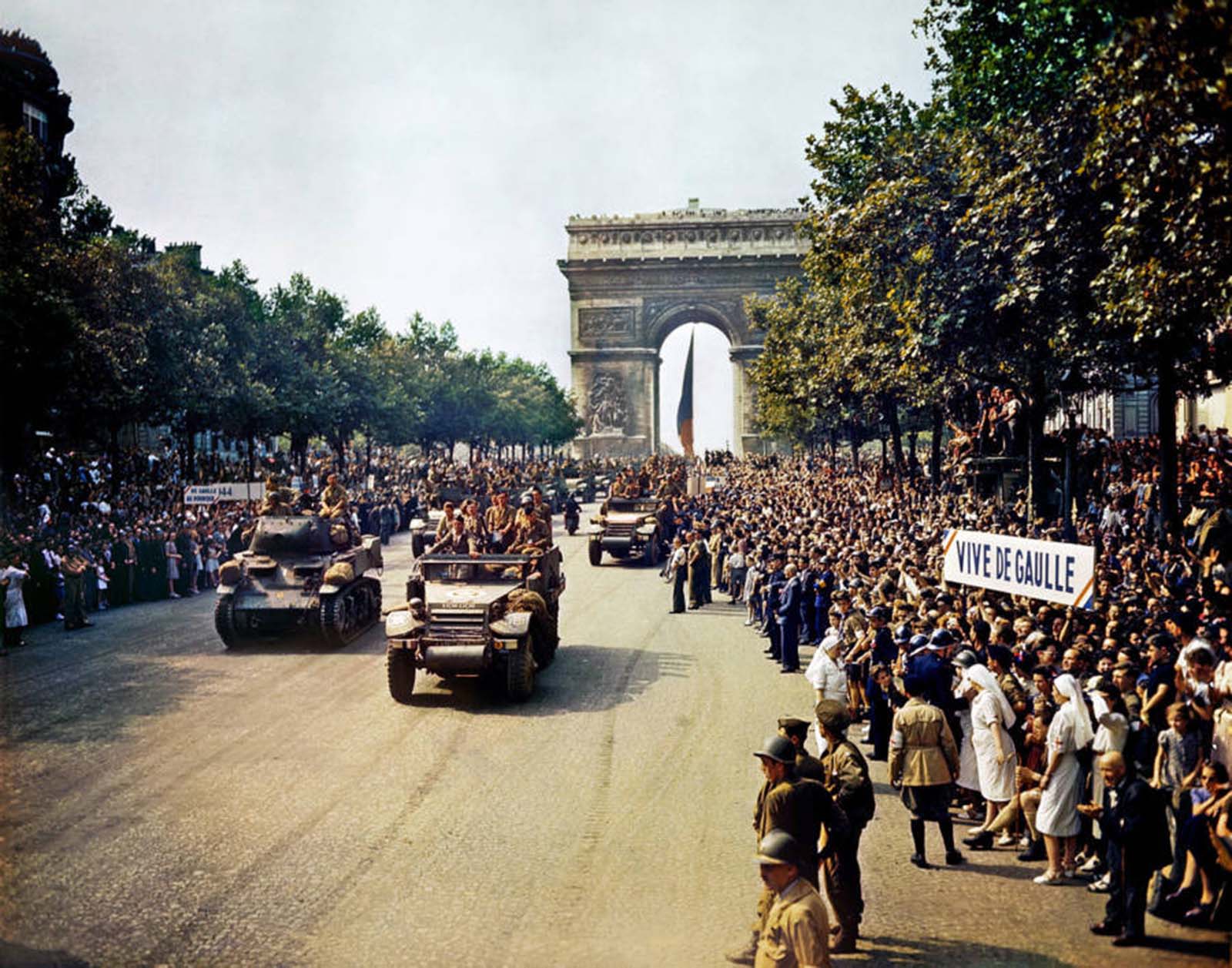
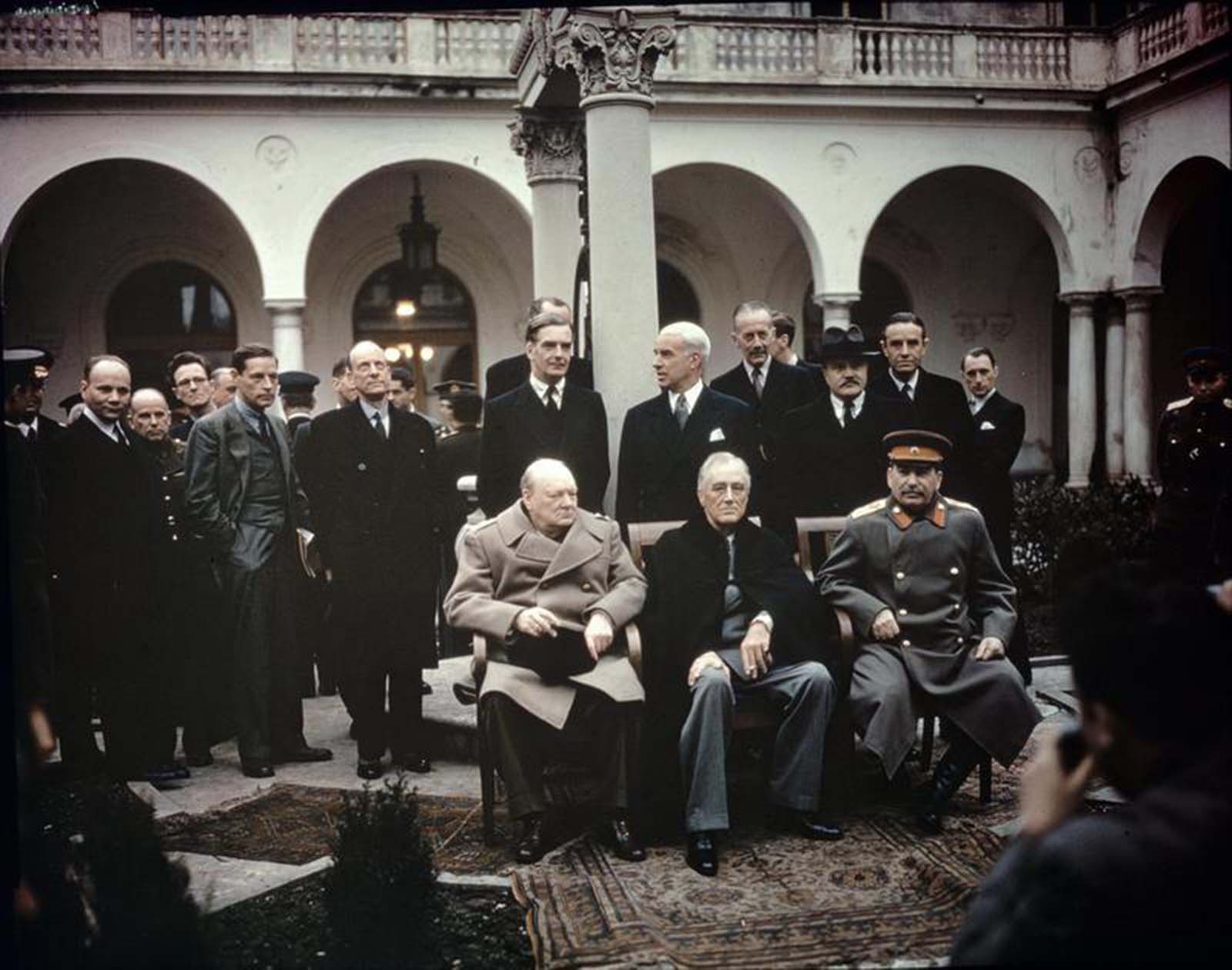
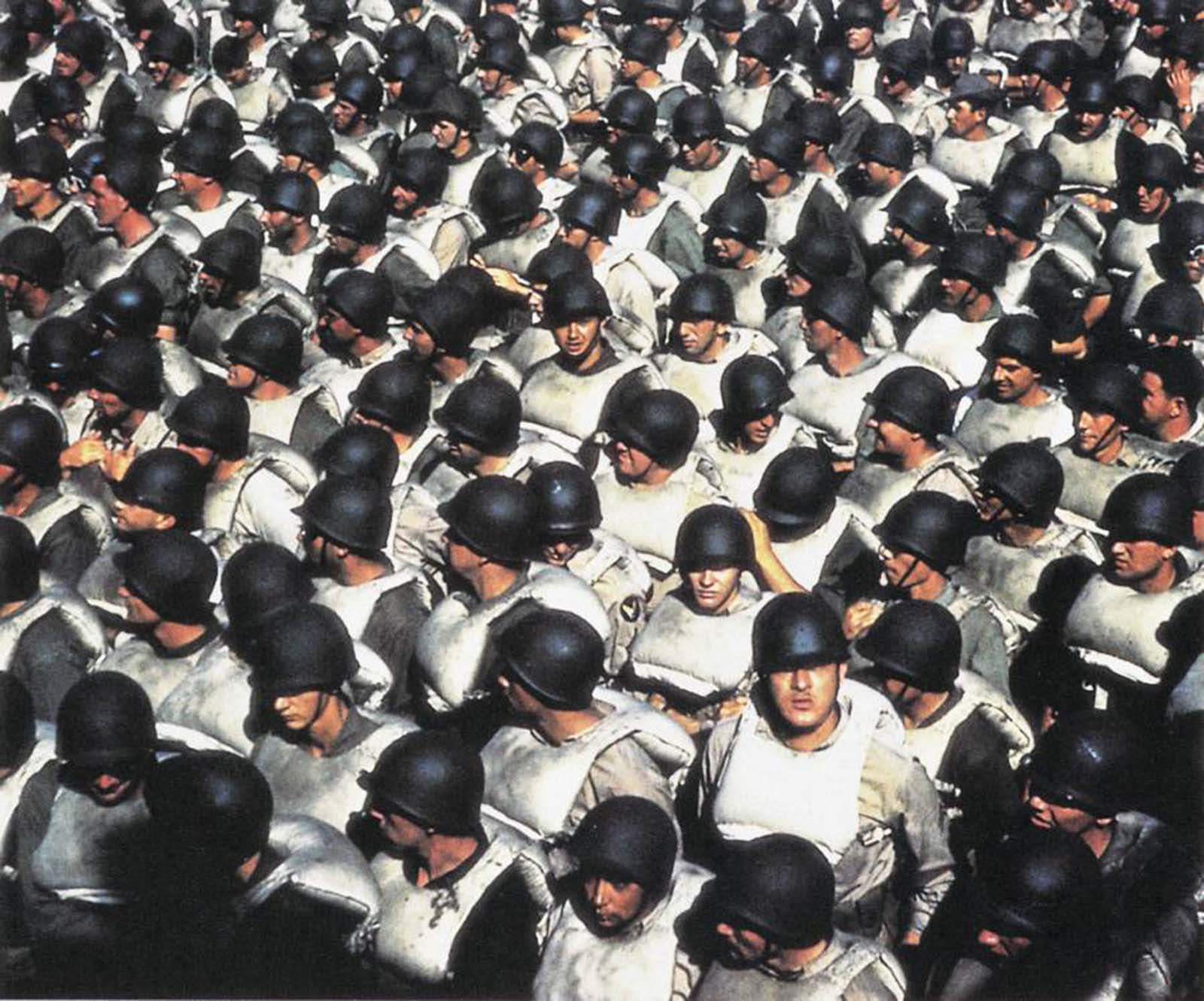

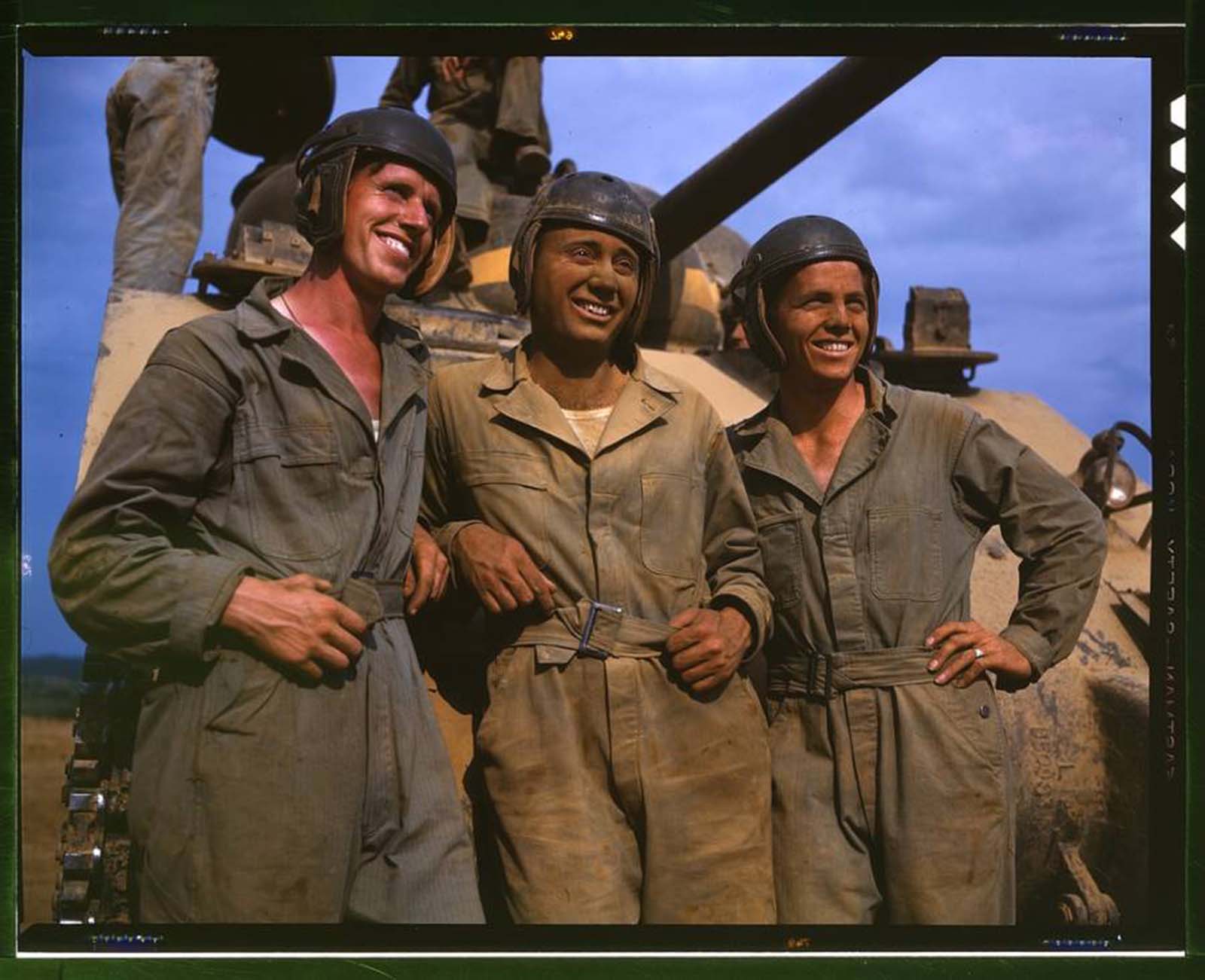
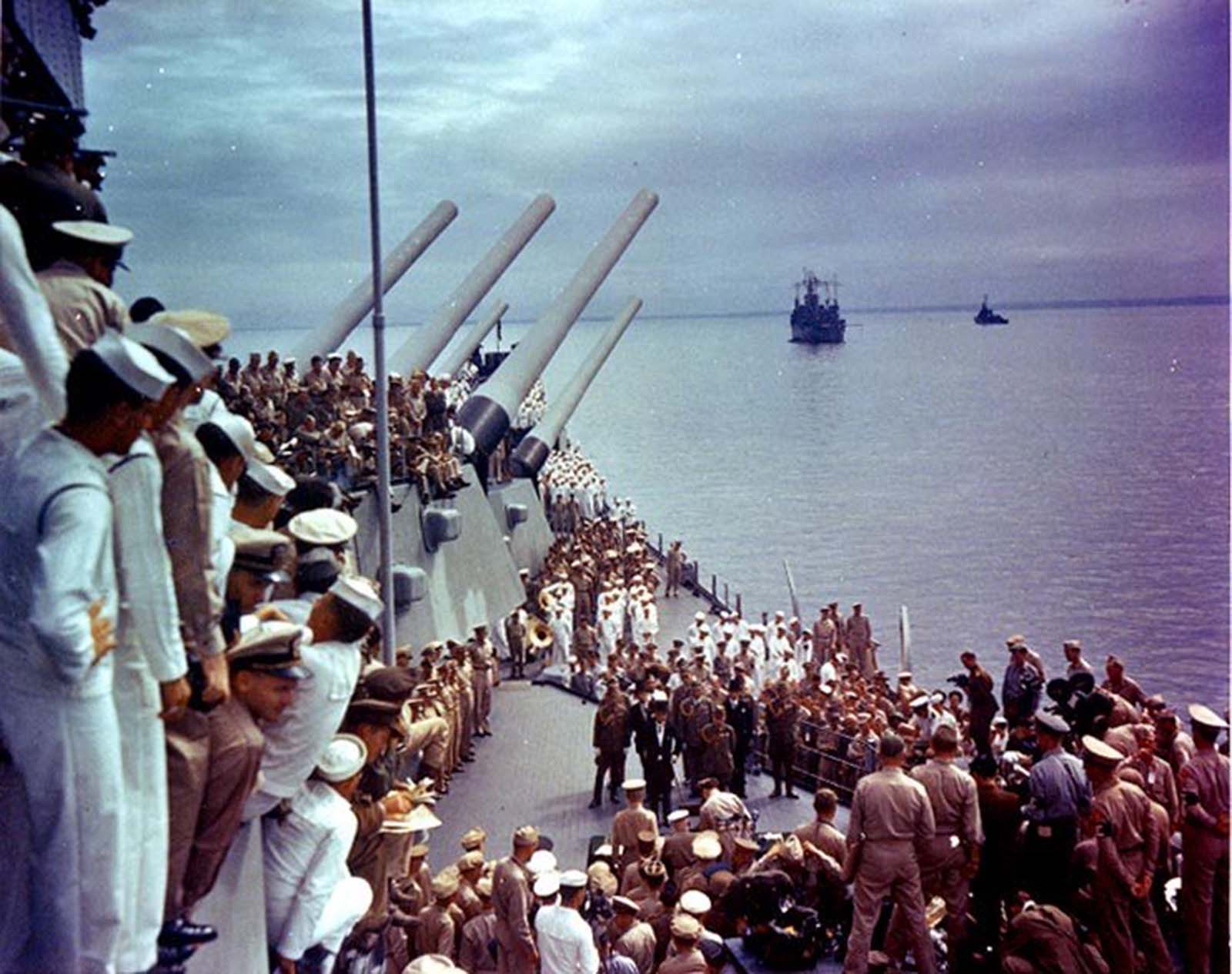
Video
Watch June 6, 1944 – The Light of Dawn for a powerful documentary on D-Day and its pivotal role in World War II.
Conclusion: The Lasting Legacy of WWII in Color
These rare color photos of World War II offer a new and emotional perspective on the war. They remind us that history is not just a collection of events but also the lives of individuals who lived through it. The pictures, many of which were never seen before, allow us to connect with the past in a way that black-and-white photos never could. The legacy of these color photographs is not just in the images themselves but in the stories they tell—stories of survival, loss, and hope. Through these powerful images, we are reminded that the cost of war is not only counted in numbers but in the lives of real people.
